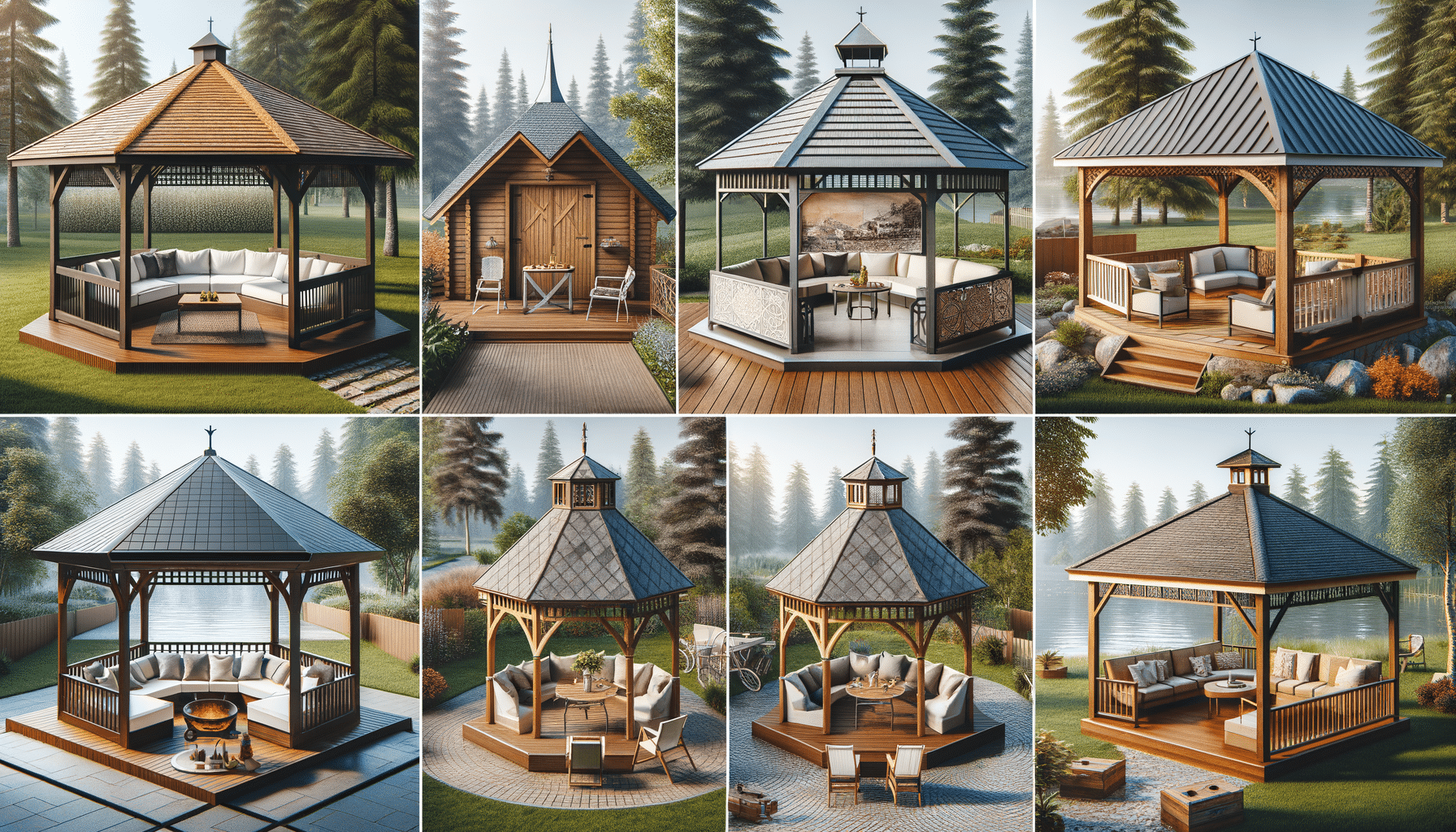Exploring the Charm and Utility of Gazebos: A Comprehensive Guide
Gazebos are versatile structures that enhance outdoor spaces, offering both aesthetic appeal and functional benefits.

Introduction to Gazebos
Gazebos are more than just garden structures; they are a blend of art and functionality that can transform any outdoor space. Traditionally, gazebos have been used as pavilions in gardens and parks, providing shade and shelter while enhancing the landscape’s beauty. Today, they continue to be a popular choice for homeowners looking to create a serene retreat in their backyard. These structures are not only aesthetically pleasing but also serve practical purposes, such as hosting gatherings or providing a peaceful spot for relaxation.
Types of Gazebos
Gazebos come in various styles and materials, each offering unique benefits. The most common types include:
- Wooden Gazebos: Renowned for their natural beauty and traditional appearance, wooden gazebos are often crafted from cedar or redwood, offering durability and resistance to decay.
- Metal Gazebos: Typically made from aluminum or steel, these gazebos are known for their strength and modern look. They require minimal maintenance and can withstand harsh weather conditions.
- Vinyl Gazebos: These are a popular choice for those seeking a low-maintenance option. Vinyl gazebos are resistant to rot and insects, and they maintain their appearance without the need for painting.
- Pop-up Gazebos: Ideal for temporary use, pop-up gazebos are portable and easy to set up, making them perfect for events and camping trips.
Each type of gazebo has its own set of advantages, making it essential to consider the intended use and environment before making a selection.
Design Considerations for Gazebos
When planning to add a gazebo to your outdoor space, several design factors should be considered to ensure it complements your existing landscape. The size of the gazebo is crucial; it should be proportional to the available space and intended use. A larger gazebo may be suitable for hosting events, while a smaller one might suffice for personal relaxation.
The location is another key factor. Placing the gazebo in a spot that offers scenic views or integrates well with garden paths can enhance its appeal. Additionally, consider the style and color scheme of the gazebo to ensure it harmonizes with your home and garden.
Incorporating additional features such as lighting, seating, and even heating can extend the usability of the gazebo throughout the year, making it a versatile addition to any property.
Benefits of Gazebos
Gazebos offer a myriad of benefits that extend beyond their visual appeal. They provide a sheltered space that can be used for various activities, from dining al fresco to enjoying a quiet afternoon with a book. The presence of a gazebo can increase the value of a property, making it an attractive feature for potential buyers.
Furthermore, gazebos can serve as a focal point in a garden, drawing attention and creating a sense of balance and harmony within the landscape. They offer a private retreat from the hustle and bustle of everyday life, allowing homeowners to reconnect with nature in their own backyard.
With the right design and placement, a gazebo can become a cherished part of any home, offering both functionality and a touch of elegance.
Conclusion
In conclusion, gazebos are a versatile addition to any outdoor space, offering a blend of beauty and practicality. Whether used for entertaining guests, enjoying solitary moments, or enhancing the landscape’s aesthetic, these structures provide numerous benefits that make them a worthwhile investment. By carefully selecting the type, design, and location of a gazebo, homeowners can create a stunning and functional retreat that enhances their property’s value and charm.